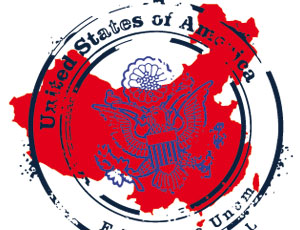Letters from America: Chinese Investment in the U.S. – Strategy is Key
The pros and cons of looking for Chinese investment
This is Part XI of our ongoing Letters from America to Asia Series, featuring opinions and observations on America’s trade relations with China and emerging Asia from Chris Devonshire-Ellis.
 Dec. 10 – Now that the dust has settled following leadership issues in both the United States and China, both sides have gotten back to business with some muscle. For the Americans, the beef is always the trade gap, and to this end, U.S. Ambassador to China Gary Locke recently announced at the annual Amcham Government Appreciation dinner in Shanghai: “We welcome Chinese investment in the United States with open arms.”
Dec. 10 – Now that the dust has settled following leadership issues in both the United States and China, both sides have gotten back to business with some muscle. For the Americans, the beef is always the trade gap, and to this end, U.S. Ambassador to China Gary Locke recently announced at the annual Amcham Government Appreciation dinner in Shanghai: “We welcome Chinese investment in the United States with open arms.”
“One simply cannot overestimate the importance of the U.S.-China economic relationship,” Ambassador Locke said. “More than a billion dollars of goods and services flow between our two countries every single day. Over 800,000 American jobs depend on producing goods and services sold to China. And over a million Chinese jobs are anchored by trade with the United States.”
One of the themes running through Ambassador Locke’s speech was bilateral trade, and how to increase it. An underlying message was that the United States is open to increasing Chinese investment into the United States; however achieving that is not as simple as it appears.
It should be remembered that the majority of opportunities in attracting Chinese overseas investment lie within its state-owned enterprises. The issue with this is that China’s SOEs often have larger agendas than just making money overseas – and understanding what they want and what they are looking to achieve must be thoroughly understood prior to actively encouraging such investments. It also means that a strategic and systematic approach should be undertaken when actively looking for such investments. Chinese SOEs are driven by government policy first, and not necessarily immediate offshore commercial considerations.
Therefore, identifying the key strategic areas that China is looking to invest in as a matter of state policy is key for any U.S. governor, senator or mayor that wishes to seek out and pursue Chinese investment. Merely talking up the skill-sets of American workers and identifying investment opportunities to make money in the United States is not going to be enough. Selling American cities with glossy brochures in Beijing and Shanghai without a clear objective that matches Chinese state-driven strategy isn’t going to work either.
Not all Chinese investments are state driven, but the majority are. Of these, many are huge investments that get handled on a government-to-government basis involving political considerations and huge corporations. The likes of Canada’s Nexen being acquired by CNOOC is one example of this. However, it is also true that smaller privately-held Chinese companies are investing abroad, albeit with the caveat that they first gain approval from the Chinese government and that the capital outflows involved are carefully monitored by the State. So, in short, even Chinese entrepreneurs need to have government connections, and the line between what appears to be a purely entrepreneurial-driven company and one with Chinese state involvement, even within this, can be difficult at times to ascertain.
At such levels, my experience dictates that India’s entrepreneurs are typically more globally savvy and transparent than their Chinese counterparts, who have grown up and developed in a state-dominated commercial sector. It remains a sobering fact that while 90 percent of the companies listed on the Bombay Stock Exchange are owned by entrepreneurs, 90 percent of those listed in Shanghai and Shenzhen are partially or wholly-owned by the Chinese state. Such state dominance impacts upon the true entrepreneurial skills of the Chinese executive, and operations in China may not transfer particularly well to the compliance and transparency standards that exist as regulatory structures in the United States.
Chinese investments overseas tend to be systematic in approach and possess an underlying strategy that may not be immediately apparent. As just one example, consider the recent Chinese investments into America’s aviation industry. Arlington’s Glasair, Hawker Beechcraft of Kansas, and Cirrus Aircraft of Minnesota have all been acquired – exclusively due to the Chinese strategy of buying technology that will assist it in developing its own aircraft. That is happening – the Commercial Aircraft Corporation of China (COMAC) is already up and running, and is looking for orders beyond those it already has obtained from Chinese airlines for its new C919.
So who do the newly-acquired American companies now hope to be selling to? China. Just how long it will be before the technology is absorbed is hard to say, but in the longer term it would seem to make little sense to manufacture aircraft components for a Chinese market thousands of miles away. And consider again that the majority of revenues and the taxes these generate will be from sales in China, not the United States. Also, the Chinese development of the C919 is in direct competition to Boeing and Airbus, and while it makes sense for China to want to develop its own commercial aircraft, it appears that the technology to make that happen is being acquired from America itself. It may also be true to say that civil aircraft design and technology has gone as far as it can, and that China is in fact buying existing technology that will, at some point, become outdated. But until U.S. firms can develop a new generation of engines, American technology is being sold to Chinese manufacturers to make aircraft with no discernible long-term tax or revenue benefits to the nation, and in a product that will compete with a domestic manufacturer for overseas (i.e. Chinese) sales. That’s Chinese strategy at work right there, and I question how much thought has gone into looking at Chinese investments and the implications associated with the U.S. policy of specifically attracting inbound Chinese investment. I suspect not a great deal.
One interesting contrast with how business is conducted in the United States and how it is conducted in China is the manner in which investing companies have to apply for business licenses. In the United States, anyone can open up a company and begin trading, pretty much the only barrier being financial. In China, all investing companies must go through an entire “examination” process – which includes laying out specific business plans, revenue projections and data concerning the number of employees, turnover and future investments. All this has to be submitted to the Chinese government before approval is even granted. That means that the Chinese have an idea of what sort of revenues – and tax generation and job creation – should be possible before any investment is approved. It also means that if your investment does not pan out the way you intended – either through bad planning, or (even worse) attempts to deceive the government over your true intentions – the State retains the right to fine the foreign investor or even cancel the business license. In this manner they keep track of every single foreign investment in China. It’s a great system in many ways – and I wonder again if by engaging a looser approach, America may be losing data or control over investments emanating from the PRC.
The Chinese predilection for looking after the Motherland first is not a new one. When acting as Governor of Java in 1818, the Founder of Singapore Sir Stamford Raffles issued a number of taxes, including a “Capitation Tax,” specifically on Chinese merchants. This was due to the fact that they tended to organize themselves into positions of monopolistic trade, working in effective Chinese cartels and remitting all proceeds back to China without leaving any tangible benefits for Java, save the local employment of labor. It is an oft-repeated story.
One can also take a shrewd look at British auto manufacturer Manganese Bronze, maker of the ubiquitous London taxi cab. Based with assembly plants in Coventry, England, the company entered into a joint venture with China’s Geely. While Geely owned just 20 percent, part of the production was allowed to relocate to Shanghai, which then later assumed responsibility for all international sales. Back in the UK, the Coventry plant has just declared bankruptcy after a recall of over 400 orders caused in part by faulty components from the China plant. The London taxi cab, its iconic image, brand and technology is now effectively fully Chinese-owned and controlled from the Shanghai operations of Geely. It took just six years to strip out the UK parent and then effectively discard the empty shell. What is currently left in the UK is a publicly-traded company in administration, and over 300 workers jobless.
While none of this necessarily suggests that Chinese investment into the United States is undesirable, it does suggest that great care and attention to detail needs to be taken by American politicians when seeking to attract such investments. The United States wants secure employment for American workers and taxable revenues to aid the exchequer. It would be prudent when assessing Chinese overseas investments that it is certain that the Chinese investor is committed, long term, to the same.
Looking for Chinese Investment
- Conduct research into China’s outbound investment strategy. This can be found here, here, here and here.
- What local industries match up with China’s needs? Do they require Chinese investment? Is it desirable?
- Where (in China) are the key players in this industry?
Chinese Investor Due Diligence Checklist
- Who are they? Get verified company information – sourced from an independent third party in China. Have their business licenses, track records, and crucially, their government connections.
- What do they want from the United States? What is their longer term business and development plan? What commitments can they provide?
- Do the Chinese investor’s plans match with your strategic understanding of what is best, longer term, for your own industries?
Finally, it should be noted that the U.S. Department of Commerce in China can provide a great deal of on-the-ground assistance, and this can be of tremendous help when trying to match, make, or seek introductions to strategic China investors. The U.S. Embassy in Beijing and all of the U.S. consulates throughout China have officers who can assist (See: www.commerce.gov)
Due diligence on companies in China should also be undertaken, and the company’s structure, financing, and verified business licenses should all be obtained. Professional service firms based in China with an understanding of these requirements can assist.
Chris Devonshire-Ellis is the founding partner of Dezan Shira & Associates. The firm assists foreign investors in the China market and can provide due diligence services on Chinese companies in addition to advising American corporations on their China strategy. Founded in 1992, the practice has 12 offices in China and is a U.S. Department of Commerce preferred supplier. Please email the firm at china@dezshira.com or visit www.dezshira.com.
Related Reading
 An Introduction to Doing Business in China
An Introduction to Doing Business in China
Asia Briefing, in cooperation with its parent firm Dezan Shira & Associates, has just released this 40-page report introducing everything that a foreign investor should be familiar with when establishing and operating a business in China.
 China Business Handbook
China Business Handbook
An excellent, complimentary beginners overview to conducting business in China may be obtained courtesy of the U.S. Commercial Service, whose “China Business Handbook” is now in its second edition and was co-written by our practice.
 Raffles: And the Golden Opportunity by Victoria Glendinning
Raffles: And the Golden Opportunity by Victoria Glendinning
Thomas Stamford Raffles (1781-1826) was the charismatic and persuasive founder of Singapore and governor of Java. An English adventurer, disobedient employee of the East India Company, utopian imperialist, linguist, zoologist and civil servant, he carved an extraordinary (though brief) life for himself in Southeast Asia.
The Complete ‘Letters from America to Asia’ Series
A complete list of articles from our ongoing ‘Letters from America to Asia Series’ featuring opinions and observations on America’s trade relations with China and emerging Asia.
Chinese Outbound Foreign Direct Investment Faces Rigorous Scrutiny
China’s Provincial Outbound Direct Investment in 2011
Co-Investing in China with Chinese Partners
Delaware and Nevada Holding Companies for Chinese Foreign-Invested Enterprises
Double Taxation Agreements for China Investment
- Previous Article China to Support Development of Border Economic Cooperation Zones
- Next Article China Encourages Foreign Investors to Explore Unconventional Oil and Gas




























